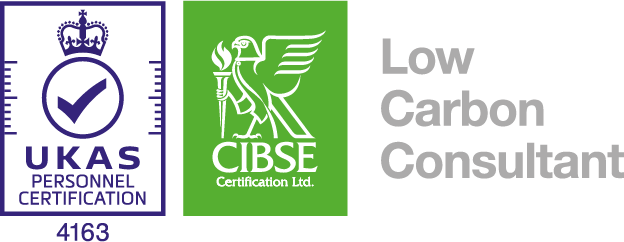Overheating – the hot topic in housing (pun intended)
 Inkling recently co-authored a Zero Carbon Hub publication on assessing overheating in dwellings. This document describes the methodologies and tools currently available for the prediction of overheating risk in dwellings in England and Wales, and poses a challenge to improve on them.
Inkling recently co-authored a Zero Carbon Hub publication on assessing overheating in dwellings. This document describes the methodologies and tools currently available for the prediction of overheating risk in dwellings in England and Wales, and poses a challenge to improve on them.
The key points highlighted in the report are:
– The results obtained from modelling overheating risk are very much a product of the user’s level of experience and the information in-putted. Consistency and robustness of results for any type of analysis is generally improved when a methodology is followed prescribing, for example, how the analysis should be undertaken, what internal gain profiles and weather files should be used; and what the pass/fail thresholds should be. Such methodologies eliminate some of the user discretion which can influence or bias the outcome.
– Lifestyles and occupancy preferences vary enormously, and as homes are rarely built bespoke for one set of occupants, guidance is needed for designers on what internal occupancy profiles and gains to accommodate, including an upper limit on ‘reasonable’ gains that should be utilised when predicting overheating risk. These should be designed specifically for the purpose of testing overheating as opposed to predicting annual energy consumption (for example) and may need to be adjusted according to unit size.
– There are other crucial user inputs. Assumptions made regarding areas such as window opening, ventilation, shading and thermal mass are likely to affect the thermal comfort results achieved. A methodology should ideally offer clear guidance on which situations demand which inputs.
– Gul et al (2012) studied current building practices and concluded that the domestic and non-domestic sectors take a significantly different approach to design. Dynamic Simulation Modelling (DSM) is currently rare for domestic developments but it plays a key role in the design of non-domestic buildings. The reasons for this are largely linked to cost and skills availability, so the domestic industry will need to decide whether these tools offer sufficient improvements in design stage predictions to overcome the barriers.
– Methodologies such as the Standard Assessment Procedure (SAP) and Passive House Planning Package (PHPP) are usually quicker and simpler to apply than using DSM tools but do not capture the dynamic relationship between the internal and external environment. We need to better understand the reliability of all these tools and methodologies by comparing predicted results to in-use performance. Such analysis could then inform the best approach for striking a balance between the complexity (and cost to projects) of a methodology and the accuracy of the prediction.
– Future methodologies should take into account work that was done when developing CIBSE TM52 and other existing methodologies, and consider the limitations detailed in the publication to develop a flexible, cost-effective and reliable approach to designing for future homes.
We (at Inkling) are very glad to have been involved with this project as it is an issue that has long concerned us; we hope to stay involved with the next phase of the project developing a new methodology for overheating risk prediction in dwellings. Whether this will be something legislated, form part of the planning process, or be a best-practice guidance is still up for debate. The current government seems unlikely to implement anything mandatory in the near future, so for now it seems likely that whatever is developed will be offered as best practice guidance and hopefully adopted widely as an insurance policy against the repercussions of having to fix overheating dwellings later down the road. Uptake will be greater, the more pragmatic and reliable the methodology developed, and therefore engaging a wide variety of engaged stakeholders will be a big key to its success.
There is also a question of what constitutes ‘overheating’ in a dwelling context – are we concerned with a lack of thermal comfort or only with more dangerous heat stress leading to ill health? We do not know who will live in a dwelling but we do know that some individuals are less tolerant of overheating, for example the elderly or unwell, therefore should we by default assume that such a person will occupy the dwelling when assessing overheating?
For our part we would like to ensure that the resulting methodology gives good, clear guidance to modellers on the process to follow including the internal gains and occupancy profiles to assume for various sizes of dwelling. Gains will need to be based on an upper reasonable limit (unlike gains used for calculating heating loads which tend to be based on a lower level to ensure heating systems are sufficient for lightly occupied spaces). These issues will require discussion regarding the reasonable level of internal gains for a studio, one-bed, two-bed, etc. dwelling. Profiles will also need to be evaluated – is it a harder test if people are home during the day (and therefore happy to have windows/doors open) or out all day leaving the dwelling sealed up for security reasons. Resolving this is harder than it at first appears, but can’t be beyond the wit of engineers.
We wouldn’t want to presume what the outcome of the consultation process will be, but the most appealing solutions mooted so far include some kind of triage system that picks out higher risk units (risk factors include single aspect, communal heating systems, limited ventilation openings, city centre locations and large glazing areas). Low risk units might only be subject to a simple SAP or PHPP style test, whilst those identified as higher risk may require some dynamic thermal modelling to prove that this risk has been sufficiently mitigated within the design.
We are optimistic that working with the hub, the industry can collectively agree a robust, cost-effective and reliable solution – watch this space..
 Posted by Susie Diamond
Posted by Susie Diamond- Posted in Overheating, Publications, Research
 Jul, 27, 2015
Jul, 27, 2015 Comments Off on Overheating – the hot topic in housing (pun intended)
Comments Off on Overheating – the hot topic in housing (pun intended)

 Susie: 07972 263 676
Susie: 07972 263 676
 Join Us On In.com
Join Us On In.com

